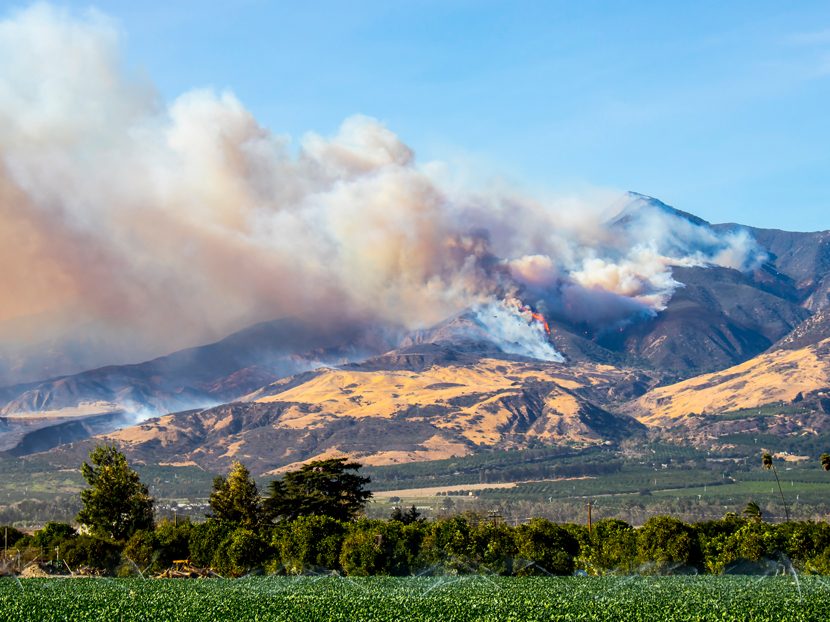See the Air
What changes when you can measure what you breathe?

Most weather apps on your smartphone have sections that give you some anecdotal insight into the outdoor air quality in your ZIP code. For most people, air quality data doesn’t change the course of an average day. What has changed in the past when we took a closer look at the air we breathe, and how could technology help us in the future?
“During the Cold War in the mid-1940s through the early 1960s, the U.S. government conducted about 100 nuclear weapons (atomic bomb) tests in the atmosphere at a test site in Nevada, more than 100 in the Pacific, and one — the first ever — in New Mexico,” notes the National Cancer Institute (https://bit.ly/3epZjtX). “The radioactive substances released by these tests are known as ‘fallout.’ They were carried thousands of miles away from the test site by winds.
“As a result, people living in the United States at the time of the testing were exposed to varying levels of radiation.”
As winds carried the radioactive materials from the fallout of these explosions into populated areas, notable trends in diseases such as thyroid cancer arose, explains the Atomic Heritage Foundation (https://bit.ly/3ex3RPn). As the health spikes were recognized, concerned citizens downwind of the various test sites spoke up. Eventually, they found the truth about the danger of what they were breathing.
Decades later, the U.S. government admitted fault to misleading the public about the risks associated with these nuclear tests. Downwinders, as they became known, struggled to find restitution (https://bit.ly/38Zl5nb).
The 1990 Radiation Exposure Compensation Act (www.justice.gov/civil/common/reca) summary states: “Following the conclusion of (atmospheric nuclear weapons development) activities, lawsuits against the United States alleged failure to warn of exposures to known radiation hazards. These suits were dismissed by the appellate courts. Congress responded by devising a program allowing partial restitution to individuals who developed serious illnesses after presumed exposure to radiation released during the atmospheric nuclear tests or after employment in the uranium industry. The Radiation Exposure Compensation Act was passed on October 5, 1990.”
One of the most difficult parts of the downwinders’ experiences is that, initially, they didn’t have adequate ways to determine when they were being exposed, or what materials caused them harm. We are not in the same era of information darkness in 2020. How can we better detect and react to air-quality concerns in the future?
As a starting point, the word about the dangers of an atmospheric nuclear blast is out. This type of widespread testing isn’t an invisible feature of the American West anymore. However, less toxic atmospheric conditions may exist today that should cause a change in behavior.
Measuring what we breathe
You can’t fix what you don’t measure, as the saying goes. Harmful pollution is not always from a single-point source, such as a nuclear bomb test. Busy highways, industrial districts and other airborne contaminants may not be potent enough to be recognized thousands of miles away, but the cities and counties nearby are at risk. At the micro level, how do I know what I am breathing right now outside my house?
There are a variety of emerging data aggregator services that can pinpoint air quality by small regions. BreezoMeter has an application programming interface (API) that can be purchased to see the effects of a variety of atmospheric conditions. Pollens, pollution factors and even the smoke from fires can be overlaid on a map in real time. Some indicators can be as accurate as a street, it claims.
When I looked to see the company’s use cases, I saw a few unfamiliar faces (www.breezometer.com/use-cases). A few cosmetic companies use BreezoMeter data. They can alert customers when pollution levels are high and recommend skin care products that are good for those conditions. This industry with a much larger B2C reach is now in the air-quality monitoring business, which is an odd development — or a keen eye for a well-targeted market.
Closer to PHCP professionals’ expertise, companies can adjust the function of indoor air-quality filters based on outdoor conditions. No need to filter things that aren’t currently present. One could even better predict the remaining lifespan of filters in these devices based on the cleanliness of the filtered air.
Companies such as Awair (www.getawair.com) crowdsource the atmospheric data. Every person who buys one of its indoor/outdoor sensors is added to a map, anonymously. You can see what other customers are measuring in real time, wherever these sensors are present.
Automated ventilation strategies
What do we do with this information? It is one thing to know what is happening, another to react to it. If my weather app says the pollution levels in my area are very high, I might skip an outdoor run that day. In the best case, the structures we live in and work in would automate different scenarios to adjust things such as ventilation strategies.
Imagine a wildfire is burning upwind of your office. You may not notice a plume of smoke, but sensors know that particulate matter is headed your way. Could your building adjust your percentage mix of outdoor air? You wouldn’t seal up the building like a Ziploc bag, but you also wouldn’t want to fill it with smoke if indoor CO2 levels were acceptable. At a minimum, a text message to close office windows would be nice.
In another scenario, let’s say an indoor sensor notices your building has conditions allowing for mold to grow. An alert and a reactive flood of fresh air may be useful. In these processes, the fewer human to-do list items and the more automation, the cleaner the air we will all breathe.
A huge opportunity exists to connect real-time air data to functional equipment in buildings. We are decades past the nuclear downwinder response timelines, but we are still very reactive to new air-quality indicators. How could you use atmospheric data to change the future of our industry?





